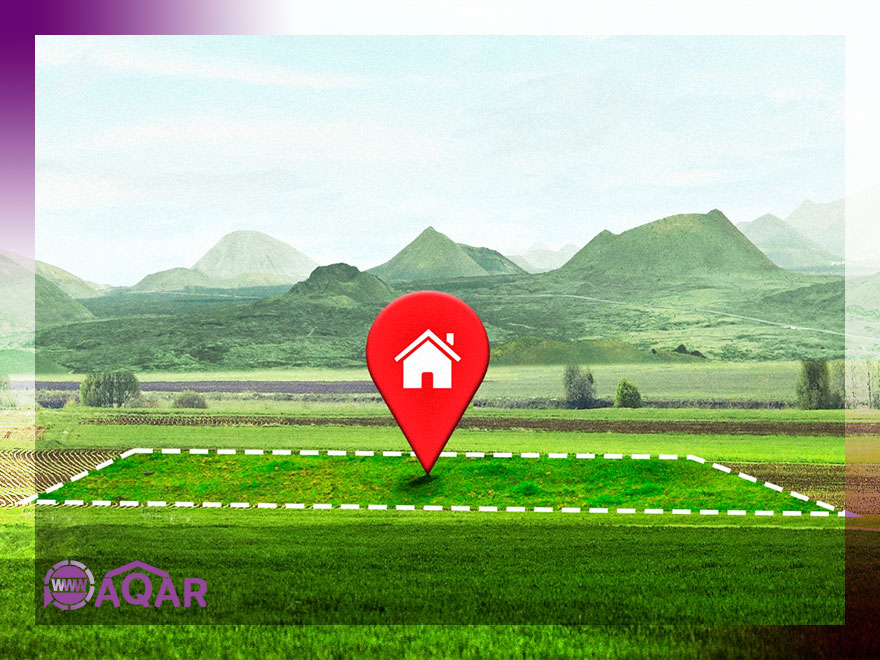Selling land requires a fundamentally different approach than marketing traditional homes. Unlike residential properties with staged interiors and curb appeal, land sales depend on helping potential buyers envision possibilities rather than admire existing features. The most successful real estate agents and real estate professionals understand that attracting serious buyers to land listings demands specialized strategies, advanced technology, and deep market knowledge.
In this comprehensive guide, we’ll explore proven strategies that real estate marketing experts use to promote land listings effectively and generate quality leads. From understanding buyer psychology to leveraging cutting-edge digital marketing tools, these techniques will help you attract the right buyers and close more land deals in today’s competitive market.
Understanding the Land Market and Buyer Psychology
The land market operates differently from traditional residential real estate, requiring real estate agents to adapt their approach to attract buyers with distinct motivations and concerns. Understanding these differences is crucial for developing effective real estate marketing efforts that resonate with your target audience.

Different Types of Land Buyers
Land buyers fall into several distinct categories, each with unique needs and decision-making processes. Developers and investors typically focus on development potential, zoning regulations, and ROI calculations. These buyers often work with larger budgets and shorter decision timelines when they identify viable opportunities.
Recreational users, including hunters and outdoor enthusiasts, prioritize natural features, wildlife habitats, and access to outdoor activities. They often purchase during spring and summer months when they can fully assess the property’s recreational potential.
Homestead builders and those seeking rural lifestyles focus on building sites, utility access, and privacy. These buyers often need more time to make decisions and require extensive information about building restrictions and development costs.
Seasonal Market Trends
Market trends in land sales show distinct seasonal patterns that smart real estate professionals leverage in their marketing efforts. Spring and summer represent peak activity periods when buyers can easily access properties and assess natural features. During these months, increase your marketing budget and schedule more open houses to capitalize on heightened buyer interest.
Winter months often see reduced activity, but serious buyers remain active, particularly investors and developers who aren’t dependent on weather conditions for property evaluation. Understanding market conditions throughout the year helps you adjust your pricing strategy and marketing approach accordingly.
Addressing Common Buyer Concerns
Serious buyers consistently express concerns about utilities availability, zoning restrictions, road access, and development costs. Successful agents proactively address these concerns in their listings and marketing materials, building trust and credibility with potential clients.
Create detailed information packets that address common questions about septic system requirements, well water possibilities, building permits, and utility connection costs. This approach demonstrates your expertise and helps buyers visualize the property’s potential more clearly.
Professional Photography and Visual Marketing for Land
High quality photos and visual content serve as the foundation of successful land marketing campaigns. Unlike residential properties where interior staging creates emotional connections, land marketing relies heavily on showcasing natural features, boundaries, and development potential through compelling visuals.

Drone Photography for Comprehensive Property Views
Drone photography has revolutionized land marketing, providing perspectives impossible to achieve with traditional ground-level photography. Aerial shots effectively showcase entire property boundaries, topographical features, and surrounding landscape context that helps buyers understand the property’s full potential.
Professional drone operators capture footage during golden hour for maximum visual impact, highlighting natural features like streams, mature trees, or cleared building sites. These high quality images generate significantly more engagement than standard photography, with some studies showing up to 68% faster sales for properties featuring aerial visuals.
Include multiple aerial perspectives showing access roads, neighboring properties, and proximity to amenities or natural features. This comprehensive visual approach helps remote buyers assess properties without immediate site visits, expanding your potential buyer pool beyond the local market.
Documenting Property Features and Seasonal Changes
Capture photos during different seasons to show how the property changes throughout the year, particularly important for recreational land buyers interested in hunting or seasonal activities. Document water sources during both wet and dry seasons, showing potential buyers how these features behave year-round.
Photograph utility access points, property markers, and existing structures or improvements. Include shots of access roads in various weather conditions, helping buyers understand year-round accessibility and maintenance requirements.
Creating Virtual Tours for Remote Viewing
Virtual tours have become essential tools for attracting out-of-state buyers and investors who cannot immediately visit properties in person. Create virtual tours that allow viewers to experience the property remotely, including 360-degree views of key features and building sites.
Combine drone footage with ground-level virtual tour elements to provide comprehensive property experiences. These tools particularly benefit luxury real estate markets and high-value land parcels where buyers may travel significant distances to view properties.
Strategic Pricing and Market Analysis
Effective pricing strategy requires thorough market analysis and understanding of factors that influence land values. Real estate professionals must consider multiple variables beyond simple per-acre comparisons to price properties competitively while maximizing returns.

Conducting Comprehensive Market Analysis
Research comparable land sales within a five-mile radius from the past 12 months, paying particular attention to properties with similar characteristics like acreage, zoning, and development potential. Access county records, MLS data, and specialized land sale databases to gather comprehensive pricing information.
Consider unique features that add value beyond basic acreage, including water rights, mineral rights, development potential, or existing improvements. These factors can significantly impact pricing and should be clearly communicated in your marketing materials.
Factor in local development plans, zoning changes, and infrastructure improvements that might affect future property values. Understanding market trends and growth patterns helps you position properties competitively while highlighting long-term value potential.
Pricing Strategy Examples
For raw land with development potential, analyze subdivision possibilities and calculate potential returns based on divided parcels. This analysis helps justify premium pricing for larger parcels that offer subdivision opportunities.
Agricultural land pricing should consider soil quality, water rights, existing farming infrastructure, and local agricultural market conditions. Include soil maps and agricultural assessments in your property information to support pricing decisions.
Recreational land pricing depends on features like wildlife habitats, water access, hunting potential, and proximity to outdoor recreation areas. Research similar recreational properties and highlight unique features that justify your pricing strategy.
Optimizing Online Listings for Maximum Visibility
Online marketing forms the backbone of modern land sales, with specialized land websites and search engines driving most qualified leads. Effective online listings require strategic keyword usage, comprehensive information, and multi-platform distribution to maximize visibility among serious buyers.

Writing Compelling Headlines and Descriptions
Craft headlines that immediately communicate acreage, location, and key features that attract buyers searching for specific property types. Include terms like “buildable,” “utilities available,” “private,” and “cleared” that buyers commonly search for when evaluating land options.
Write detailed property descriptions that include zoning information, permitted uses, and development potential. Address common buyer questions about utilities, access, and building restrictions directly in your listing copy to qualify leads and attract serious buyers.
Use location-specific keywords that help your listings appear in local searches. Include county names, nearby cities, and regional features that buyers might search for when looking for land in your area.
Essential Information for Land Listings
Every land listing should include exact acreage, zoning designation, and current tax assessment details. This basic information helps buyers quickly determine if the property meets their needs and budget requirements.
Document utility availability including electric service, water options (well or municipal), sewer systems, and internet access. Include contact information for utility companies and estimated connection costs when available.
Describe road access type (paved, gravel, easement) and maintenance responsibilities. Include information about soil conditions, percolation test results, and any building restrictions or environmental factors like flood zones or conservation easements.
Multi-Platform Distribution Strategy
List properties on specialized land sale websites like LandWatch, Land and Farm, and LandHub where serious buyers actively search for land opportunities. These platforms attract qualified buyers specifically interested in land purchases rather than general property browsers.
Ensure listings appear on major real estate portals like Zillow and Realtor.com to capture buyers who might discover land opportunities while browsing other property types. Include high-resolution photos and comprehensive property details on all platforms.
Maintain consistent information across all platforms while optimizing descriptions for each site’s specific audience and search algorithms. This approach maximizes visibility while maintaining professional consistency across your marketing efforts.
Targeted Digital Marketing Strategies
Digital ads and online marketing campaigns allow precise targeting of potential buyers based on demographics, interests, and online behavior. Real estate lead generation through digital channels has become increasingly sophisticated, enabling agents to reach qualified prospects more efficiently than traditional advertising methods.

Social Media Platform Strategies
Facebook ads targeting demographics interested in rural living, homesteading, hunting, and land ownership generate valuable leads for land listings. Create custom audiences based on interests like farming, outdoor recreation, real estate investing, and rural lifestyle content.
Use Instagram to showcase property lifestyle potential through visual storytelling that helps buyers imagine their life on the property. Share success stories from past clients who purchased similar properties, demonstrating the value you provide to land buyers.
Target ads to users who have engaged with similar content or visited competitor websites. This approach helps you reach motivated buyers who are actively researching land purchases in your market area.
Google Ads and Search Engine Marketing
Implement Google Ads campaigns using location-specific keywords like “land for sale in [county name]” and “buildable lots [city name]” to capture high-intent search traffic. These searches typically indicate serious buyer intent and generate quality leads for your real estate business.
Create ad campaigns targeting different buyer types with specific messaging. Target developers with ads emphasizing zoning and development potential, while targeting recreational buyers with messaging about hunting, fishing, or outdoor recreation opportunities.
Use retargeting campaigns to reach website visitors who viewed similar land listings but didn’t contact you initially. These campaigns help you stay top-of-mind with potential clients who need more time to make purchasing decisions.
Email Marketing and Lead Nurturing
Develop email campaigns that provide valuable content about land buying processes, market updates, and available properties. Many land buyers require extended research periods, making consistent communication essential for converting leads into clients.
Create segmented email lists based on buyer interests and price ranges. Send targeted content that addresses specific buyer concerns and showcases relevant property listings that match their criteria.
Include mortgage tips, financing options, and market insights in your email communications to position yourself as a knowledgeable resource for land buyers. This approach builds trust and increases the likelihood of converting subscribers into clients.
Building Relationships with Land Buyers and Investors
Networking and relationship building remain crucial components of successful land sales, particularly in markets where word-of-mouth referrals and industry connections drive significant business. Real estate services professionals who invest in relationship building often outperform those relying solely on digital marketing.

Industry Networking and Professional Connections
Attend county planning meetings and zoning hearings to meet local builders, developers, and investment groups who regularly purchase land for development projects. These professionals often have ongoing land acquisition needs and can become valuable repeat clients.
Partner with land use attorneys, surveyors, and environmental consultants who work with land buyers throughout the purchase process. These professional relationships can lead to referrals and provide valuable resources for your clients during due diligence phases.
Join real estate investment groups and land development associations where you can connect with active buyers and investors. Regular participation in these organizations helps establish your reputation as a knowledgeable land specialist.
Local Events and Community Engagement
Participate in community events, agricultural fairs, and outdoor recreation shows where you can meet potential land buyers and showcase your expertise. These venues attract individuals interested in rural lifestyles and land ownership opportunities.
Offer educational seminars about land purchase processes, financing options, and due diligence requirements. These events position you as a trusted advisor while generating leads from attendees who appreciate your knowledge and expertise.
Maintain relationships with past clients who may refer friends, family, or business associates interested in land purchases. Satisfied clients often become your best source of new business through referrals and testimonials.
Buyer Database Management
Maintain a comprehensive database of past inquiries, categorizing potential buyers by property type, price range, and timeline. Many land buyers research options for months or years before making purchases, making long-term follow-up essential.
Follow up regularly with market updates, new listings, and price reductions on properties that match their criteria. This consistent communication keeps you top-of-mind when buyers are ready to make decisions.
Track buyer preferences and search criteria to provide personalized service and relevant property recommendations. This attention to detail demonstrates your commitment to helping them find the right property.
Providing Comprehensive Property Information
Thorough documentation and information provision differentiate professional land listings from amateur efforts. Serious buyers require extensive property details to make informed decisions, and providing comprehensive information upfront builds trust while qualifying genuine prospects.

Essential Documentation and Surveys
Obtain recent surveys and clearly mark property boundaries on maps and aerial photos. Boundary disputes and unclear property lines create significant concerns for buyers, making accurate survey information essential for successful sales.
Research and document any easements, rights of way, or deed restrictions that affect property use. Include copies of relevant documents in your information packets, allowing buyers to review restrictions and plan accordingly.
Provide soil maps, topographical surveys, and environmental assessments when available. This technical information helps buyers assess development feasibility and construction costs, particularly important for those planning to build.
Utility and Infrastructure Information
Include detailed utility company contact information and estimated connection costs for electric, water, sewer, and internet services. Many buyers need this information to calculate total development costs and determine project feasibility.
Document permits required for different types of development, including septic systems, wells, building permits, and any special environmental or zoning requirements. This information helps buyers understand the complexity and timeline for their planned use.
Create information packets with county planning department contacts, zoning regulations, and building code requirements. This comprehensive approach demonstrates your professionalism and helps buyers navigate the development process.
Market Analysis and Investment Information
Provide market analysis showing land appreciation trends in the area, helping buyers understand long-term investment potential. Include data about population growth, economic development, and infrastructure improvements that might affect future values.
Include information about comparable sales, market conditions, and pricing trends that support your listing price. This transparency builds trust and helps buyers make informed decisions about their offers.
Document any development incentives, tax benefits, or special programs available to land buyers in your area. This additional value can differentiate your listings from similar properties.
Leveraging Technology for Remote Buyers
Technology has dramatically expanded the potential buyer pool for land listings, enabling remote buyers from across the country to evaluate and purchase properties without initial site visits. Successful real estate advertising increasingly relies on virtual tools and digital communication to serve distant clients effectively.

Virtual Property Tours and Communication
Offer virtual property tours via video calls with live commentary, allowing you to guide remote buyers through property features and answer questions in real-time. This personal approach builds relationships and trust with buyers who cannot immediately visit the property.
Use GPS coordinates and mapping tools for precise location identification, helping buyers understand exact property locations and proximity to amenities or features they consider important.
Implement online scheduling systems for property visits and phone consultations, making it easy for buyers to connect with you regardless of time zone differences or scheduling constraints.
Digital Documentation and Information Delivery
Provide downloadable property reports containing all relevant documentation, surveys, photos, and legal information. This comprehensive approach allows buyers to thoroughly research properties and share information with advisors or family members.
Create mobile-friendly listings optimized for buyers searching on smartphones and tablets. Many buyers research properties during travel or downtime, making mobile optimization essential for capturing these leads.
Use cloud-based document sharing to provide secure access to sensitive property information like surveys, title reports, and environmental assessments. This professional approach demonstrates your commitment to thorough service.
Advanced Technology Integration
Implement virtual reality tours for properties with significant development potential, allowing buyers to visualize planned improvements or structures. This technology particularly benefits luxury real estate and high-value development parcels.
Use drone mapping and 3D modeling to create detailed property visualizations that help buyers understand topography, drainage, and development possibilities. These advanced tools justify premium pricing and attract serious, qualified buyers.
Integrate customer relationship management (CRM) systems that track buyer preferences, communication history, and follow-up schedules. This organization ensures consistent service and helps you maintain relationships with long-term prospects.
Qualifying and Converting Serious Land Buyers
Converting inquiries into closed sales requires systematic qualification processes and strategic follow-up that identifies motivated buyers while nurturing long-term prospects. The most successful agents develop proven track records through consistent qualification techniques and value-added services.

Pre-Qualification Strategies
Pre-qualify buyers for financing or cash purchase capability early in your conversations. Land purchases often require different financing than traditional home loans, making financial qualification essential for focusing on viable prospects.
Understand buyer timelines and specific land use intentions to provide relevant information and appropriate follow-up schedules. Some buyers need immediate solutions while others research options for extended periods before making decisions.
Ask specific questions about budget ranges, property size requirements, and must-have features. This information helps you recommend appropriate properties and avoid wasting time on mismatched opportunities.
Addressing Common Objections
Provide market analysis showing land appreciation trends and investment potential to address concerns about land as an investment vehicle. Many buyers need education about land as an asset class to feel confident about their purchase decisions.
Address financing concerns by connecting buyers with lenders who specialize in land purchases and understand unique underwriting requirements. Having reliable financing contacts adds value to your real estate services.
Offer flexible showing schedules including weekends and evenings to accommodate buyers with demanding work schedules or those traveling from distant locations to view properties.
Conversion and Follow-Up Systems
Follow up promptly with additional information, comparable sales data, and answers to questions raised during initial conversations. Quick response times demonstrate professionalism and keep your listings top-of-mind with buyers.
Create follow-up sequences that provide ongoing value through market updates, new listing notifications, and educational content about land ownership and development. This approach keeps you connected with long-term prospects.
Track conversion metrics including inquiry-to-showing ratios, showing-to-offer rates, and average time from first contact to closing. Understanding these metrics helps you refine your processes and improve results over time.
Develop standard responses to common questions about zoning, utilities, financing, and development processes. Having prepared answers allows you to respond quickly and professionally to buyer inquiries.
Offer buyer education about due diligence processes, environmental assessments, and legal considerations involved in land purchases. This educational approach positions you as a trusted advisor rather than just a transaction facilitator.
Conclusion
Promoting land listings and attracting serious buyers requires a comprehensive approach that combines traditional relationship building with modern digital marketing techniques. The most successful real estate professionals understand that land sales demand specialized strategies that address unique buyer psychology, longer decision timelines, and complex property characteristics.
Implementing these proven strategies systematically—from professional photography and strategic pricing to digital marketing and buyer qualification—will help you attract more buyers, generate quality leads, and close more land deals. Remember that land buyers often require more education and support than traditional home buyers, making your expertise and comprehensive service essential differentiators in the competitive market.
The key to long-term success lies in understanding market trends, building strong relationships with buyers and industry professionals, and consistently providing value throughout the sales process. By focusing on these proven techniques and adapting them to your local market conditions, you’ll build a thriving land sales business that attracts serious buyers and generates sustainable growth.
Start implementing these strategies today by auditing your current marketing efforts, investing in professional photography, and developing comprehensive information packets for your listings. The land market rewards agents who demonstrate expertise, provide exceptional service, and understand the unique needs of land buyers in today’s evolving real estate landscape.
Read more:
Real Estate Marketing Mistakes That Cost You Leads (And How to Fix Them)



One thought on "Proven Tips to Promote Land Listings and Attract Serious Buyers"